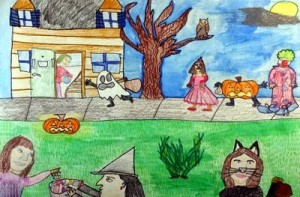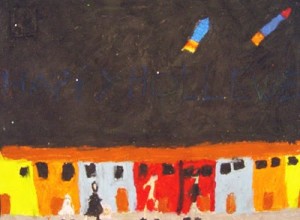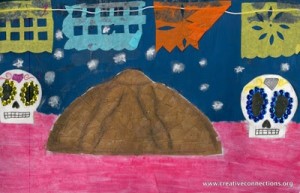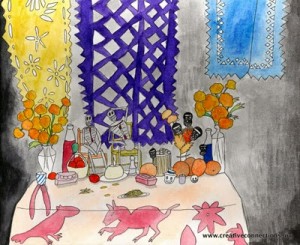The history of Halloween is commonly attributed to ancient Ireland, where the night of October 31st was known as “Hallow E’en”, or “Hallows Eve.” On this night it was believed that deceased ancestors were able to visit the living world before the start of their New Year on November 1st. Similarly, the Catholic Church celebrates All Saint’s Day on November 1st, a time when saints and the deceased are honored.

Today, Halloween has become more of a celebration of the supernatural, with traditions in the United States that include decorating pumpkins and carving jack-o-lanterns, visiting spooky haunted houses, decorating houses, and trick or treating. According to some legends, the ritual of trick or treating stems from the Irish townspeople’s routine of visiting houses in the community to ask for food contributions for the town-held feast to bring in the New Year. Costumes were worn to disguise the townspeople from the roaming spirits.

Trick or treating today is a fun activity where school-aged children dress up in elaborate Halloween costumes and walk through their neighborhood, knocking on doors and collecting candy and other sweet treats. Irish and Scottish children dress up in costume and go “guising,” a similar tradition to trick or treating except the children receive treats in exchange for singing songs or performing tricks. In parts of the UK and in other countries throughout Europe, children set candles inside skulls and place them in graveyards and enjoy firework displays.

In Mexico, Latin America and Spain, it is believed that at midnight on October 31st, the gate of heaven is opened and spirits come back to earth and join their living relatives in a happy three-day celebration of family known as “Dia de los Muertos” (Day of the Dead). During this time it is customary for families to have a huge feast featuring the favorite foods of their ancestors to celebrate and honor them. Families also adorn the cemetery altars of the deceased with beautiful flower wreaths, sugar candy skulls and other commemorative mementos, and participate in community parades.

During the observations of the Chinese Ghost Festival, it is believed that there is more of a bridge between the dead and the living, allowing ancestors to come to earth and visit their living relatives. While not celebrated in late October/early November like Halloween and Dia de los Muertos, this festival takes place in the 7th month of the Chinese lunar calendar (August), and is marked with comparable traditional customs like food offerings, altar decorations and large feasts to provide food for the “hungry ghosts” who have made the long journey back to earth.
Bon Festival, also known as “o-bon” or “urabo,” is the Japanese version of the Ghost Festival, and is the time when deceased family members are believed to revisit their homes and reunite with their families. The name comes from the tradition of lighting small bonfires outside of houses to help guide and welcome the spirits home, and again at the end of the festival as a send-off for the spirits and aid in their return journey. This is a very joyous time for the Japanese, filled with large family gatherings and the community “Bon Odori” (dance).
Sources:
Halloween History: http://www.halloweenhistory.org/
History of Trick or Treating: http://www.smithsonianmag.com/smart-news/the-history-of-trick-or-treating-is-weirder-than-you-thought-79408373/?no-ist
Day of the Dead: http://www.mexicansugarskull.com/support/dodhistory.html
Dia de los Muertos: http://education.nationalgeographic.com/education/media/dia-de-los-muertos/?ar_a=1
Hungry Ghost Festival: http://www.chinahighlights.com/festivals/hungry-ghost-festival.htm
Bon Festival: http://web-japan.org/kidsweb/explore/calendar/august/bon.html
Other Resources:
Time for Kids-Halloween History: http://www.timeforkids.com/photos-video/slideshow/halloween-history/17296
Halloween Around the World:http://www.education.com/magazine/article/Halloween-Around-the-World/
By Elizabeth Kirst